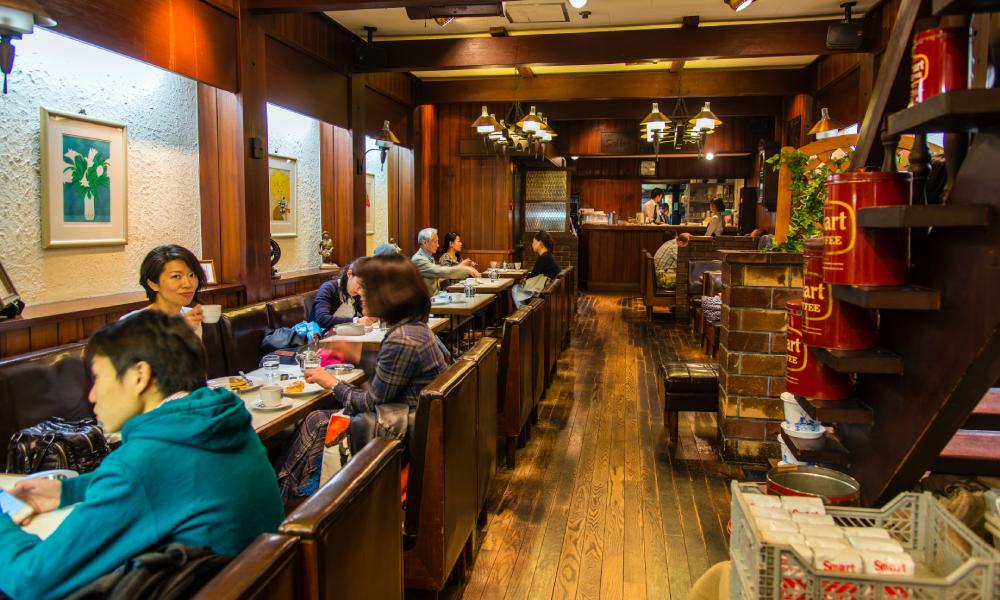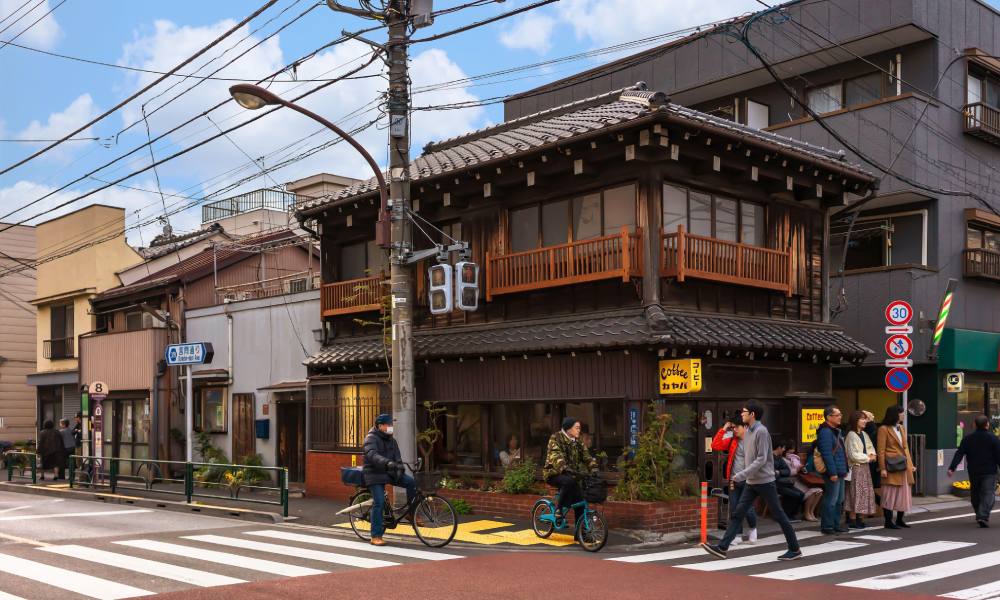Kissaten: Exploring the new age of Japanese coffee houses
Kissaten have been the focus of a vintage revival in Japan. Jenna Gottlieb speaks to Tsubasa Koike about how these traditional Japanese coffee houses have evolved, and how they will continue to do so.
Once found on almost every street corner, kissaten have been slowly disappearing from Japan over the last 50 years. However, there is evidence they are making something of a comeback – as part of a wider vintage revival.
Kissaten translates as “tea-drinking shop”. In fact, they are classic, old-fashioned Japanese coffee and tea houses that have a particular focus on the craft of coffee and creating an ambience. In general, the interior of kissaten are ornately decorated and low-lit, with many pictures or paintings on the wall.
Music also plays a central role. Kissaten opened at an almost prolific rate after World War II. They offered a space for customers to relax and listen to the vinyl records they were unable to get themselves. At this time, kissaten were part of a growing jazz subculture in Japan.
Typically, kissaten were designated for the older generation – a space to unwind after work without having to go home.
“A kissaten is darker than cafes with dimmer lighting. People go to relax, to get a rest from their busy life and enjoy specialty coffee,” says Tsubasa Koike, founder of Sebastian Coffee. “People meet with friends or family – plus, famous writers and singers have been known to visit.”
In fact, there is evidence that John Lennon and Yoko Ono were regular visitors of kissaten during the 1970s.
A century ago, kissaten would have only offered black coffee or tea. The focus was on simplicity while creating an inviting, relaxing atmosphere.
It is this simplicity and welcoming sense of hospitality that is arguably the source of inspiration for many of the coffee shops seen in Europe and the US. Indeed, the founder of Blue Bottle Coffee, James Freeman, specifically credits kissaten as a significant influence.
And while they have been gradually disappearing, the emergence of specialty coffee in Japan may be breathing new life into kissaten.

Vintage revival
Kissaten culture has ebbed and flowed over the last century, but the latest resurgence has one key difference.
Traditionally, kissaten were places filled with older generations relaxing after work and chatting with their friends. However, an entirely new demographic has entered the scene. Nowadays, younger generations are increasingly embracing kissaten culture, following in the footsteps of their older counterparts.
For a generation that increasingly favours non-alcoholic beverages, kissaten is a great option. These cafés offer a relaxing environment to socialise, and they often stay open much later than other cafés.
Furthermore, kissaten holds a strong appeal for younger generations seeking to revive a sense of vintage aesthetics. These cafés represent an intersection between Japan’s past and present, making them a target for vintage revival.
For many young people, kissaten provides a valuable opportunity to reconnect with a part of their culture they may be unfamiliar with. By returning to traditional coffee houses, younger generations can gain a deeper understanding of their cultural roots.
“I think kissaten is becoming popular among young people due to the revival of retro things,” says Tsubasa. “But I feel that the real intention is to take pictures and upload them to social media rather than being in a place to relax and interact like before.”

A portal back in time
Kissaten culture is still developing in Japan. Specialty coffee continues to rise in popularity, and kissaten have found a way to ride that wave.
“Even now, kissaten-style shops are increasing little by little,” says Tsubasa. “And specialty coffee is still a relatively new thing for them.
“The middle-aged and older customers didn’t know about specialty coffee until now,” he said. “Now that the third wave is passing and specialty coffee is recognised, kissaten is becoming more popular again.”
Furthermore, as younger generations begin to take more control, elements of the kissaten will begin to change.
“In the future, the generation of elderly people who run kissaten will change. I hope there will be more kissaten that offer specialty coffee that still allow long stays,” says Tsubasa.
Incorporating specialty coffee into these cafés seems like a natural development. However, as kissaten inevitably begin to change, the hope is that they continue to respect their cultural heritage. These cafés act as a portal back in time – too many changes could diminish their power in connecting young people to their culture.
However, the fact that kissaten are so entrenched in the lives and culture of Japanese people could be specialty coffee’s benefit, as they offer access to a consumer segment otherwise out of reach.
“In the past, the quality of imported coffee in Japan was poor,” Tsubasa says. “There wasn’t quality light roasted coffee – only dark roasts. So I think that many Japanese people still have the image of coffee as a bitter and thick drink.
“It may be that specialty coffee needs a space more rooted in people’s lives and not disturbed by others – like an old kissaten.”
Ultimately, it is the role of young people that will decide the fate of kissaten. Western café culture threatens to dilute all that made kissaten unique. However, there is still a chance for these old-school Japanese coffee houses to grow the presence of specialty coffee, while continuing to pay homage to a cultural legacy.








